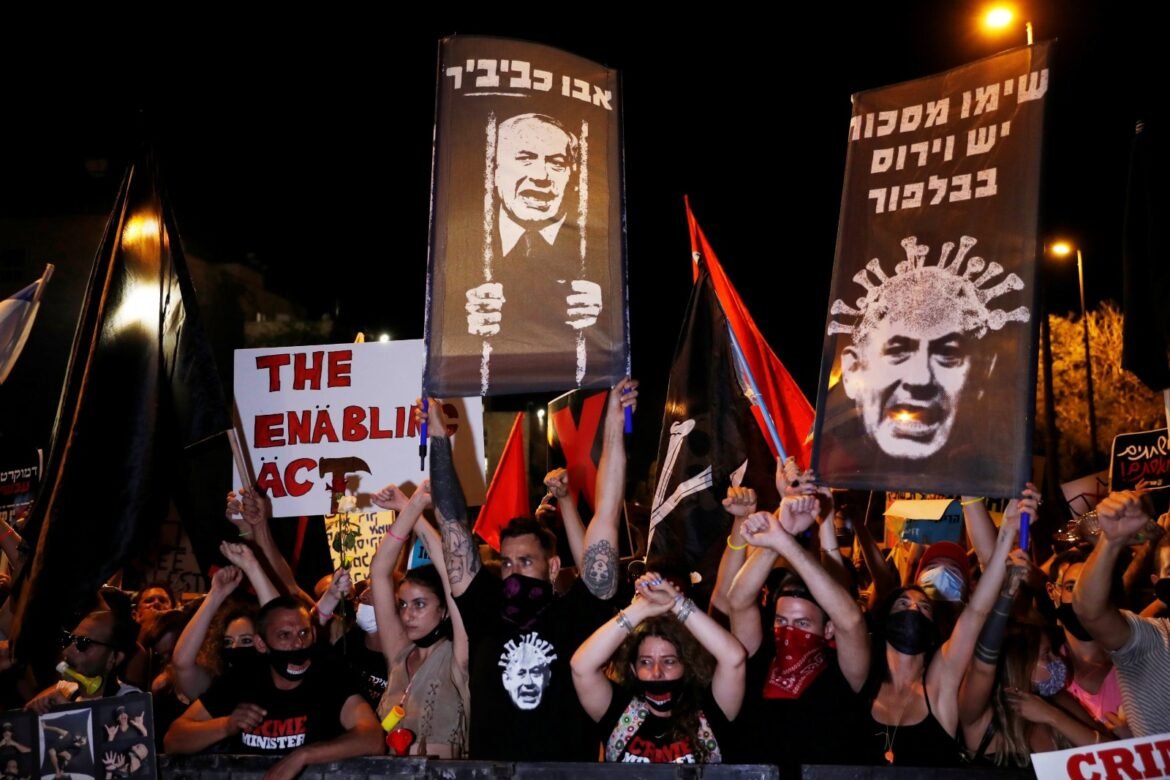The protests and Israel’s first national strike since October 7 mark a significant challenge to Prime Minister Benjamin Netanyahu. Israel has erupted in anger following the deaths of six prisoners in Gaza, whose bodies were recovered nearly 11 months after being captured during an attack by Hamas and other Palestinian armed groups. The Israeli military stated that the detainees were killed shortly before their bodies were recovered. Netanyahu blamed Hamas, saying, “He who kills a hostage does not want a deal.”However, about 300,000 people protested on Sunday evening, condemning Netanyahu’s government for failing to secure a ceasefire deal in Gaza. Izzat al-Rishek, a senior Hamas official, claimed the six prisoners died in Israeli airstrikes. Hamas has proposed releasing prisoners in exchange for an end to Israel’s military actions, the withdrawal of Israeli forces from Gaza, and the release of Palestinian prisoners.Israel at Boiling PointOn Sunday, protesters chanted against Netanyahu’s government, leading to clashes with the police. Israel’s main labor union called a strike on Monday, bringing the country to a standstill before a court ordered a return to work.
This general strike—the first since October 7—poses a fresh threat to Netanyahu’s grip on power, though analysts suggest its impact remains uncertain. “It’s too soon to tell [what this means for the government],” said Alan Pincus, a former Israeli ambassador and government adviser. “Will this protest continue? Or is this going to be a recurring theme?”Tensions are at a boiling point as fighting rages in Gaza, with over 41,000 people killed and 94,000 injured since the October 7 attack by Hamas, which resulted in 1,139 deaths and nearly 240 hostages. The International Court of Justice is investigating allegations of genocide by Israel in Gaza, while the International Criminal Court has issued arrest warrants for two Hamas leaders, including Netanyahu and Defense Minister Yoav Galant.After a brief truce and prisoner exchange in November, many Israelis demanded a ceasefire deal to free the remaining prisoners.
Negotiations seemed close in late May, but Netanyahu introduced new, non-negotiable conditions, derailing talks. Since then, violence has escalated, with increased operations in the West Bank and Lebanon.Amid growing criticism, Israel has shifted its focus to military efforts to free prisoners, launching operations that have resulted in casualties but also recovered four hostages. The recent discovery of six bodies has intensified opposition to Netanyahu’s strategy. “The government and the prime minister are now on the defensive,” said Ori Goldberg, an expert on Israeli politics. “It’s all about speed now.”Netanyahu Engages in Political Maneuvering both Domestically and in the USBoth Israel and Hamas view their conflict as a fight for survival. Each side believes it has the upper hand, making them reluctant to deescalate. Additionally, external political pressures that might force a resolution have yet to reach a critical level, and third parties have been unable to apply significant pressure. As a result, both Netanyahu and Hamas leader Yahya Sinwar, despite the dire nature of the situation, have little incentive to end the war at this time.
Tensions have risen between Washington and the Israeli government following Biden’s criticism on Monday that Netanyahu was not doing enough to secure the release of hostages. This week, an administration official mentioned that a deal was 90% complete, which was perceived by Republican critics as an undue pressure tactic against Israel.The discord between the United States and Israel started last Thursday. White House National Security Communications Adviser John Kirby maintains that the 90% figure for the agreement between Israel and Hamas, facilitated by the US and Arab states, is accurate. “You call it optimistic, I call it right,” he asserted.
The differences between the United States and Netanyahu’s positions are not necessarily in conflict. It’s possible to agree on most aspects of a deal while still having unresolved issues. This situation recalls past negotiations, where the parameters for a final status agreement on statehood have been well-established, though political will on both sides to resolve remaining issues has been lacking. Even if an agreement is reached in the Middle East, the challenge of implementation may prove to be even more complex than the negotiation itself.


